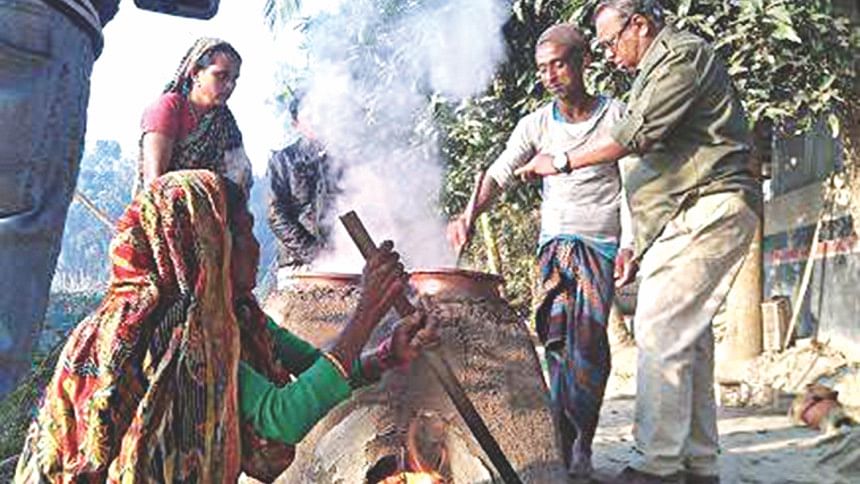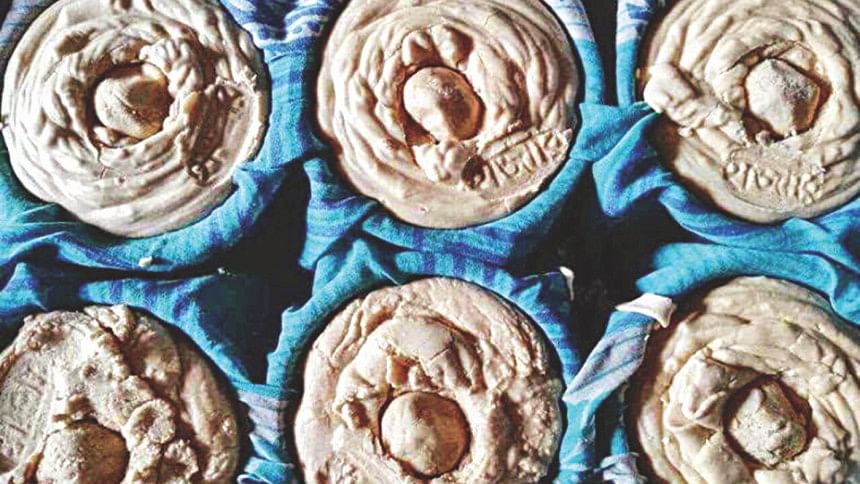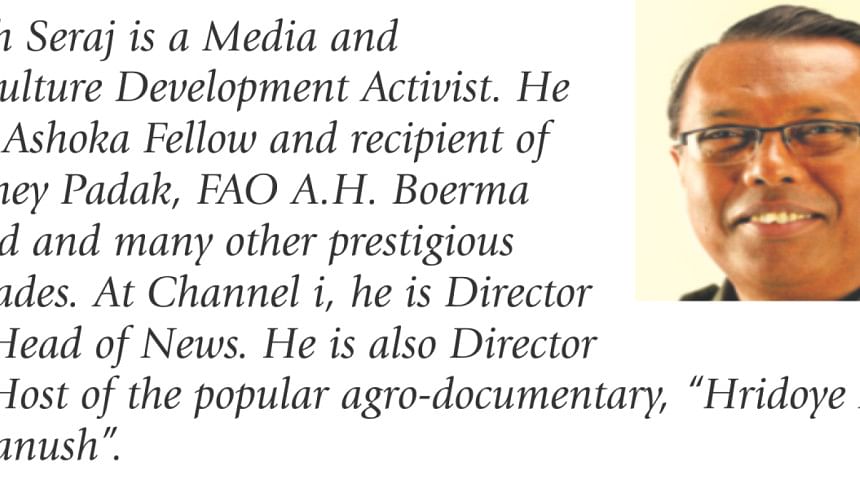Hajari gur, a fading tradition

Locals say English Queen Elizabeth had given the name, 'Hajari'. They say tigers shiver in the cold of Magh (Bangla month). Now it's Falgun time. When I'm writing this I'm feeling pretty much summer all around and the heat is in the environment. We're facing the extremity of climate change, no doubt. Farming and environment are facing a tough challenge. Winter is nowhere now even in the remotest region of Bangladesh. It's a three-week-old story that I'm going to tell the readers.
I went to Manikganj for filming and found the foggy weather and a little bit of cold. The villagers of Shikderpara in Harirampur's Jhitka were still at their beds. It was 5:30 in the morning. An ambiance of silence was prevailing all over the croplands of Shikderpara. However, in this very early dawn, I met some people. We call them gachhi, tree climbers. These are the very first people of the village who woke up and went to collect date juice. Their wives are at home, preparing the stoves and doing household works. The earthen stoves are very special. There are four stoves at one earthen structure where date juice gets boiled (locally these are known as bain).
People can tap date juice from different regions of Bangladesh but Shikderpara's date juice and gur (molasses) has a very unique tradition and heritage. The molasses they produce is called Hajari gur and it's been the tradition for the local farmers for two hundred years or more. They make it from the date juice. However, the people who were involved with making this very special gur have mostly left the profession, only a few are holding on to the glorious tradition.
I was walking in the early dawn through the pastoral path of Shikderpara village in search of gachhis. The first gachhi I met is Zahid Hajari. He went on top of ten date palm trees with great efficiency and came down with juice in his pots.
"How long have you been doing this Zahid?" I asked.
"It's been three decades that I climb up and down," replied Zahid Hajari.

The fog was then fading away and I could see the sun coming through the eastern sky. As the day was opening, people were getting busy with the collected juice at their home for boiling them following the age-old methods. I could also notice the men coming back to their home with the juice pots on their shoulders. Abdus Salam has been involved with this profession for forty years.
"How many pots of juice have you collected?" I asked Salam.
"Three from twenty date palm trees," he replied.
"That's not much. Why is this happening?" I asked him again.
"Probably the climate and weather is making this happen," he replied with some doubt in mind.
During my childhood I had seen collectors coming down from date trees with plenty of juice in their pots.
Let's come back to Hajari gur and its tradition. As you have already read, gachhis of Shikderpara have kept alive the 200-year-old tradition of Hajari gur. Some do it on big trays, not like the earthen stoves. These trays are called tapal. But, the Hajari is boiled well on the bain (earthen stoves), the locals say and that's the tradition. And, the gur that is produced from bain are the original Hajari. For its taste and quality, the fame of Hajari gur has spread across the world. I talked with Habiba Khatun, a villager, who was boiling juice on her home yard.
"The season is for just three months and I'm pretty happy with my earnings," she said.
"How many kgs of gur do you make every day?" I asked.
"7-8 kgs but the boiling takes time," she replied.
In this village people no longer plant date palm trees. They remain busy for three months with the old trees.
Dear readers, let's share an interesting history of Hajari gur. Locals say English Queen Elizabeth received it as a token of love and a piece of gur got broken on her hands into thousand pieces. She tasted this gur. Since then the gur came to be known as Hajari (from Bangla word hajar, meaning thousand). And, the families who have kept alive the tradition till date are known as Hajari families. But, not everyone of them are involved with this profession and that's why Hajari gur is becoming extinct with other significant Bangali traditions.
I could get the beautiful smell around the village of the date juice. Let's share how the earthen stove works. They put the dry wood through one side and through the other the heat goes out. There are four stoves at one place. Raw juice is poured on one stove and it is transferred to other three, with spaces of time. And, thus gradually the juice becomes the very special Hajari.
Shamim Hajari shared a very exceptional and rare history. Hajari gur is the only one of the kind in Bangladesh which has a brass seal. I came to know Elizabeth sent from England the seal engraved with Hajari, after she was really satisfied with the taste.
"Many other people have faked the seal and making the fake Hajari gur and sending those to bazaar," complained Shamim.
The new generation of the Hajari family and others are not interested to keep the tradition alive. Their children don't want to do the hard work. Ramjan Ali says his children have already told him that they're not going to be with the Hajari tradition. Shamim Hajari demands for government support to boost up these private initiatives.
Later on, I went to Jhitka Bazar to see the market of Hajari gur. Strangely, it was tough to find the real Hajari gur at the market. Those were mostly fake, I could understand. The price of pure Hajari gur is Tk 800 per kg. But, most of the gurs in the market was selling for Tk 90 per kg. Although they look almost the same, but the fake ones are mixed with too much of sugar.
Dear readers, traditional Bangali culture became enriched with taste, pleasure and love. Bangalis are incomparable in making food items from natural elements. It is wonderful that after everything, near Dhaka, in Manikganj's Jhitka, some families have still held onto the famous Hajari gur that has incredible taste and smell. This Hajari gur is related to Dhaka's history. I expect, to preserve the heritage, the government as well as private entrepreneurs will extend cooperation. The historical Hajari gur might come up as well in the District Branding Project of the government and most importantly we should not let a heritage of ours become extinct.


 For all latest news, follow The Daily Star's Google News channel.
For all latest news, follow The Daily Star's Google News channel. 



Comments